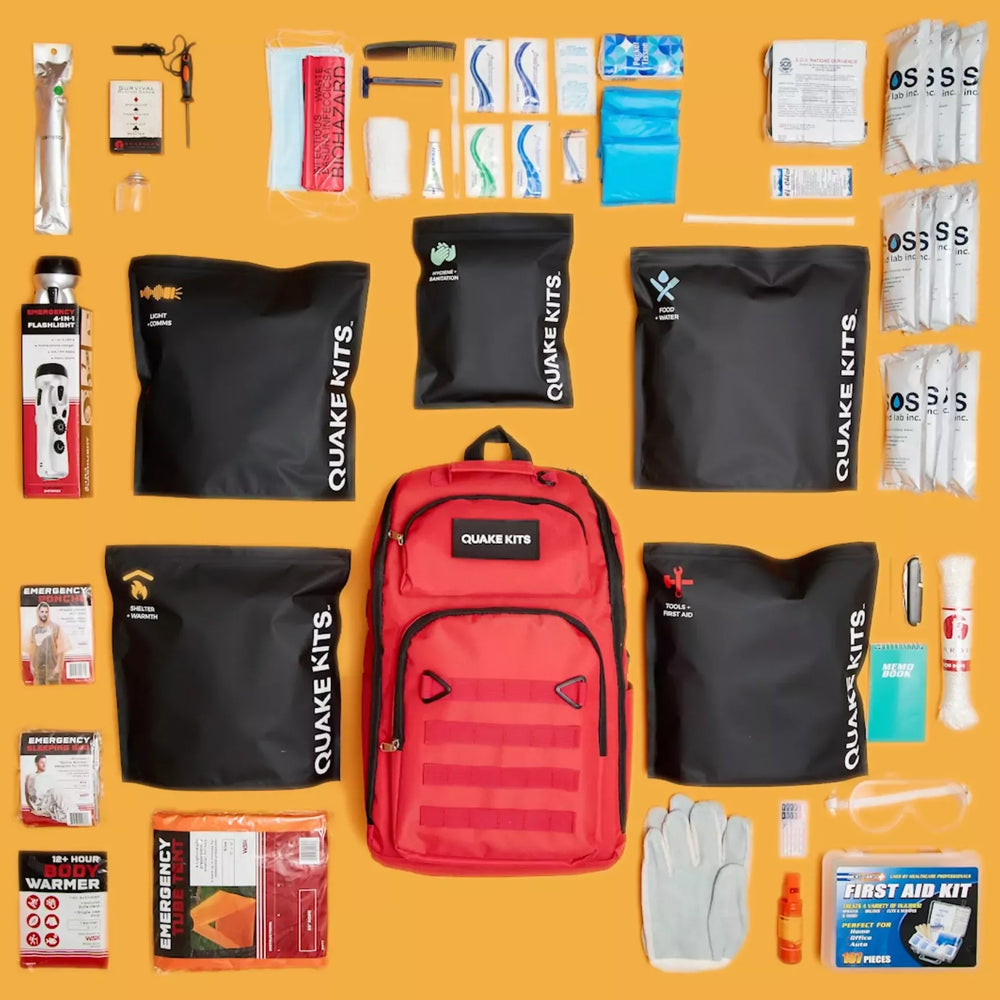When the Streets Aren’t Safe: Escaping the City During Civil Unrest or Disaster
Escaping the City During Civil Unrest or Disaster
Where to Go and What to Bring
Cities are vibrant, but when civil unrest or catastrophe strikes, urban areas can quickly become dangerous and chaotic. Whether you're responding to riots, widespread flooding, or civil breakdown, having a solid plan can be the difference between safety and being trapped. Here’s your guide to stepping out of harm’s way with clarity, confidence, and the right supplies.
1. Assess, Plan, and Choose Your Direction
Know the Threat
-
Is it localized (a few blocks) or citywide?
-
Will roads be blocked, or public transit shut down?
-
Keep tuning into news, local alerts, or trusted channels for updates.
Choose Your Exit Strategy
- Primary Route: Identify your main escape path, ideally via a less-congested road or transit line.
- Secondary Route: Always have a backup (could involve walking or bike paths).
- Safe Zones: Pre-pick nearby safe locations such as suburbs, outlying parks, or network of friends/family outside the city.
- Avoid hot zones and monitor potential choke points like bridges, tunnels, or subway stations.
2. Gather Your Go-Bag Essentials
Your grab & go bag should be light, portable, and ready to handle a multi-day urban to rural journey. If you plan on going off-grid, opt for a more heavy-duty bag such as a 35L+ backpacking bag.
a) Water & Hydration
-
At least 1 gallon per person per day, with a 3-day minimum. This can be achieved through water pouches, purification tablets, or filtration bottles & straws.
b) Food
-
Non-perishables: canned goods, dried staples (oats, pasta, rice), and energy-dense bars.
-
Freeze-dried meals or emergency rations which are great for portability.
c) First Aid & Meds
-
30+ days of essential prescription meds (if you can, most doctors will allow a 30 day advance on non-scheduled meds).
-
OTC basics: pain relievers, antihistamines, antacids.
-
A well-stocked first aid kit, with trauma supplies, antiseptics, and gloves.
d) Navigation & Communication
-
Printed maps of your route and region (GPS may fail or lose signal) and a compass. If you don't know how to use a compass, we have you covered.
-
Battery-powered or hand crank (dynamo) NOAA/weather radio to stay informed.
-
Whistle and signal mirror or flag for attracting help, plus a spare phone battery or power bank.
e) Shelter & Warmth
-
A lightweight emergency blanket or bivy sack.
-
Poncho or rain jacket and at least one warm base layer (ideally compressed wool or synthetic).
f) Tools & Utility
-
Multi-tool or compact knife for general tasks.
-
Headlamp or flashlight, with spare batteries (AA/AAA) if you opt out of having a dynamo or solar option.
-
Water-resistant matches or a plasma arc lighter for optional warmth/cooking.
g) Documents & Cash
-
Copies of IDs, insurance forms, and emergency contact list in a waterproof+fireproof pouch.
-
A mix of small bills and coins as ATMs and card readers may not work.
h) Self-Protection
-
Consider sturdy gloves, a dust mask or respirator, and safety goggles especially if tear gas or dust is present.
- Carry basic self defense items such as pepper spray and/or a knife.
i) Specialized Needs
-
Baby: diapers, formula, wipes.
-
Pets: food, leash, meds, and a basic pet first aid kit.
3. Where to Head and Why It Matters
-
Suburbs and Small Towns: Lower population density, often more stable infrastructure and community support.
-
Designated Community Shelters: Check ahead, know location and capacity.
-
Rural or Off-Grid Locations: If you have a safe place to regroup make sure the route remains accessible.
-
Friends and Family: A pre-arranged safe haven with known access and mutual readiness.
Aim for locations with:
-
Secure shelter (homes, community centers, or public buildings).
-
Access to water sources, even potential natural ones (streams, lakes).
-
Community support systems like neighbors, local first responders, or volunteers.
4. Timing, Logistics & Execution
-
Depart Early: Rush-hour gridlock or streetblocks can stall movement.
-
Blend In, Stay Vigilant: Avoid crowds or obvious signs of evacuating. Move calmly, quietly.
-
Stay Updated: Use your radio or phone (if safe) to track developments.
-
Check In: Let someone know your route and destination if possible.
-
Flexible Pace: Walk or bike portions if roads are blocked. Use public transit only if it's safe and running. Public transit can erupt into chaos if tensions are high so keep that in mind.
5. After You Escape, Stay Prepared
-
Resupply Smart: Once in a safer zone, refresh your water, food, and med reserves.
-
Set Up Sustainable Systems: Have a plan for longer stays that includes access to more food, filtered water, heat and shelter.
-
Stay Connected: Consistently check-in with loved ones and monitor news or official channels.
Escaping a city during unrest or disaster is a challenge but with a flexible plan, essential supplies, and the right mindset, you can navigate chaos with more assurance. Your safety starts with preparation so don’t wait until the streets are unsafe. Start putting your escape bag together today.
Need a pre-packed kit to simplify your escape plan?
Check out our NEW single person Urban Survival Kit or choose from any of our multi-day QK kits perfectly portioned for the amount of people in your family. For affordable and quick solutions, check out our Quick Grab Bags which cover the basics allowing you to evacuate in record time.







Leave a comment